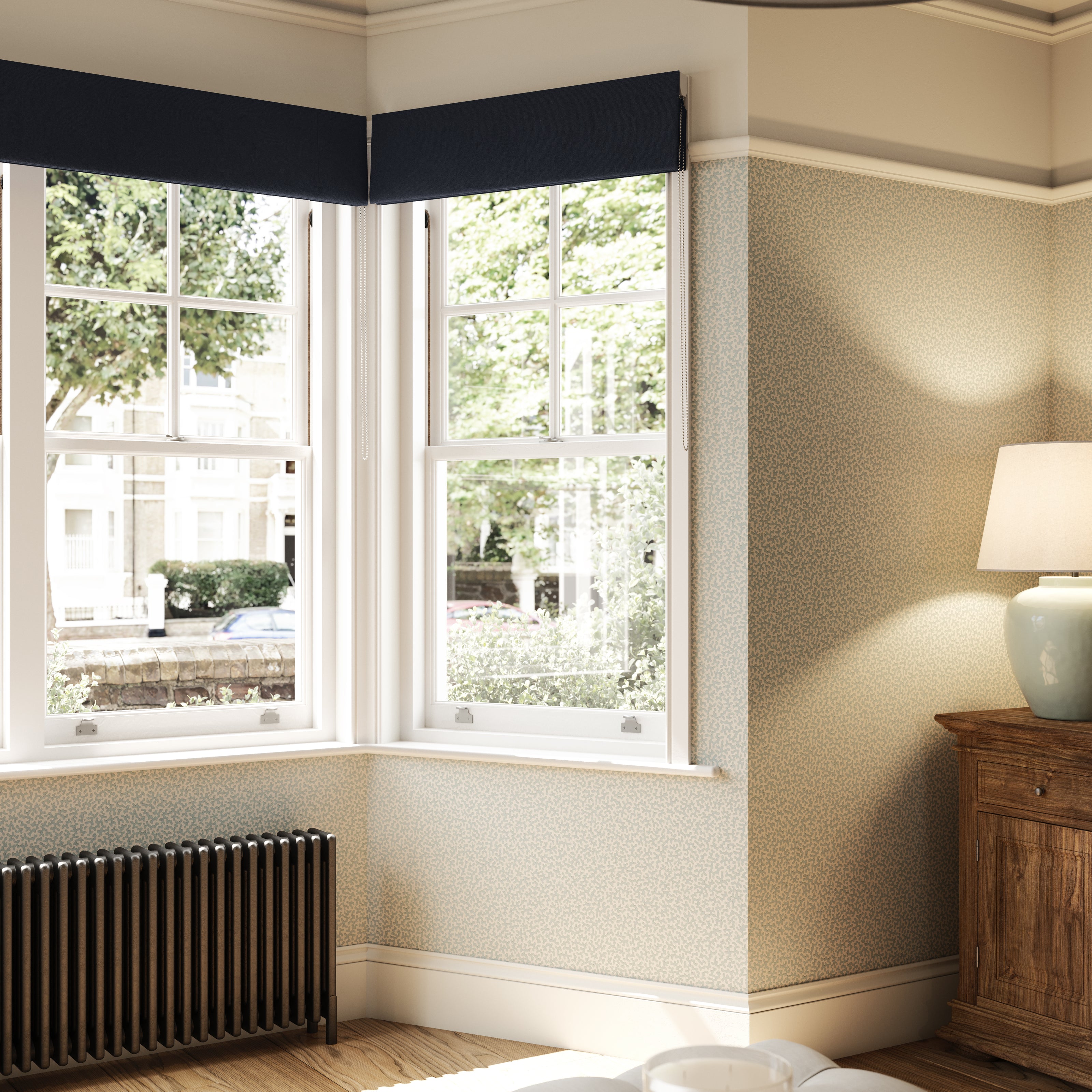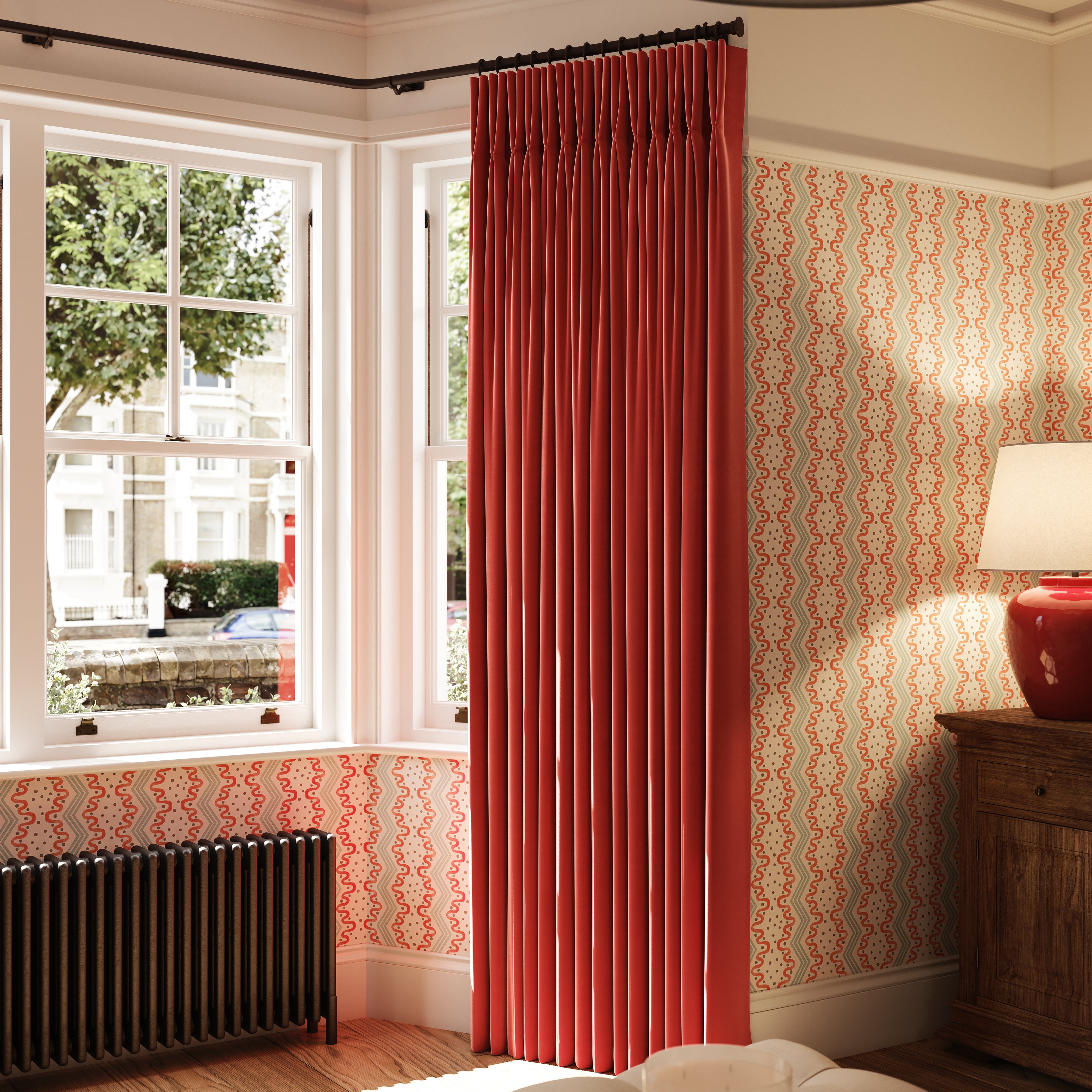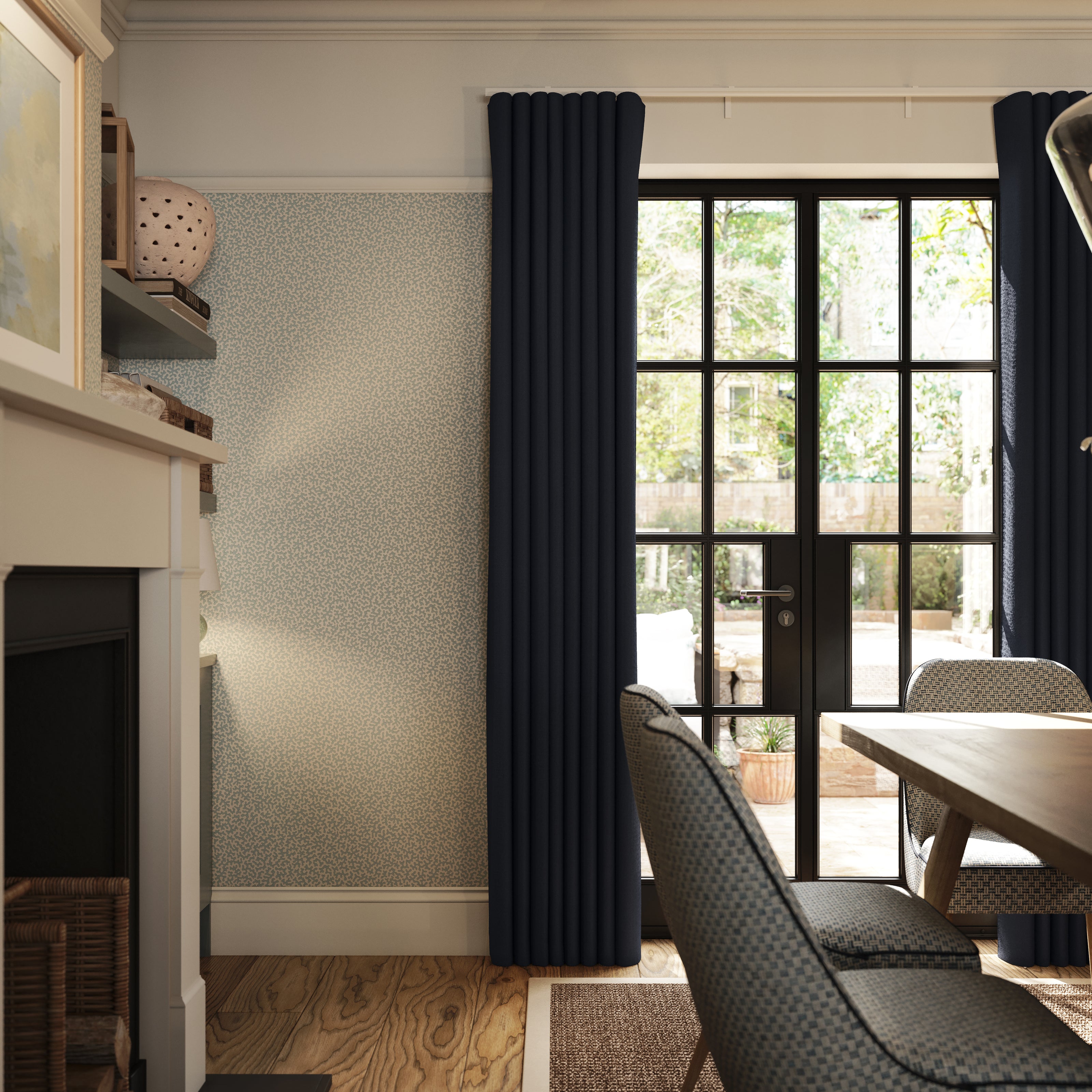Measuring For Blinds
Eyeing up our blinds? We don’t blame you. Blinds are great for…
- When you’ve got limited space around the window, or small spaces like dormers.
- Keeping the fabric out of the way, such as in kitchens, bathrooms, and offices.
- Blinds use less fabric than curtains, making them a budget-friendly choice.
- Blinds with a winding mechanism include child safety features like quick-release chains and cords. Heavy-handed use or catches/hooks can trigger these releases.
- A word to the wise: if you need window wear to reach the floor, curtains are a better option - long blinds are heavy and may activate the safety release.
Things to consider when measuring for your blinds:
-
Blinds should be at least as wide as the windowsill, and ideally 10cm wider on each side (20cm in total) if space permits.
-
For multiple windows, align curtains and blinds so their tops are a consistent distance from the ceiling.
-
As a general rule, the higher up on your wall the top of the blind sits, the taller your room will look.
-
The wider a blind is over the window, the less light will creep in at the sides.
And don't forget
-
When the blind is raised up, it will cover some of the space at the top of your window.
-
80% of light comes through the top 20% of your window, so you want to aim for the top of your blind to be as high up as possible.
OK, let's measure! You will need:
-
1.
A sharp pencil behind your ear.
-
2.
A retractable metal tape measure (not a dressmaker’s tape).
-
3.
A friend (measuring is often a two-person job.)
Before you start…
- Consider any obstructions that you will need to work around, or that will limit the space available (furniture, sockets, pipes, beams, etc).
- Does your window open inwards? If so you’re going to need to fit your blind as high as possible, and have over 30cm of space above your window, otherwise your window will bash on the blind and not open fully.
- There is often space around and above your window, which allows you to position your blind just right.
- If you can’t find the size you need, just contact us.
-
Width
- Measure the width of your window from left to right, including the frames.
- Add at least 10cm on each side for proper coverage, ensuring your blind is at least wider than the windowsill.
- Select the ‘Width’ option closest to your measurement, and check it fits.
-
Drop
- Decide where the top of your blind will be:
- Ceiling fixed: Best if you have less than 15cm of wall space above the window. Align the top with the ceiling/coving.
- Wall fixed: Works if you have more than 15cm of wall space. Position the top of the blind about 10cm below the ceiling/coving.
- Place your tape measure at the chosen top position and measure down past the window and windowsill to your desired endpoint. The blind should be at least 5cm longer than the window.
- If there’s a radiator below, aim for halfway between the sill and the radiator top.
- Check the different ‘Drop’ options on the website and pick the best fit. If relevant, mark the top of the blind on the wall with a pencil.
-
Child Safety
Our blinds with winding mechanisms come with child safety quick release features. To ensure compliance you need to provide a 'fitting height'.
Measure the distance from the top of your blind (either the ceiling or the mark on your wall) to the floor. This is the ‘fitting height’.
Other Measuring & Fitting Guides
-

Fitting Blinds
Guide Here -

Fitting Curtains
Guide Here -

Measuring Blinds - Bay Windows
Guide Here -

Measuring Curtains - Bay Windows
Guide Here -

Measuring - Curtains
Guide Here




